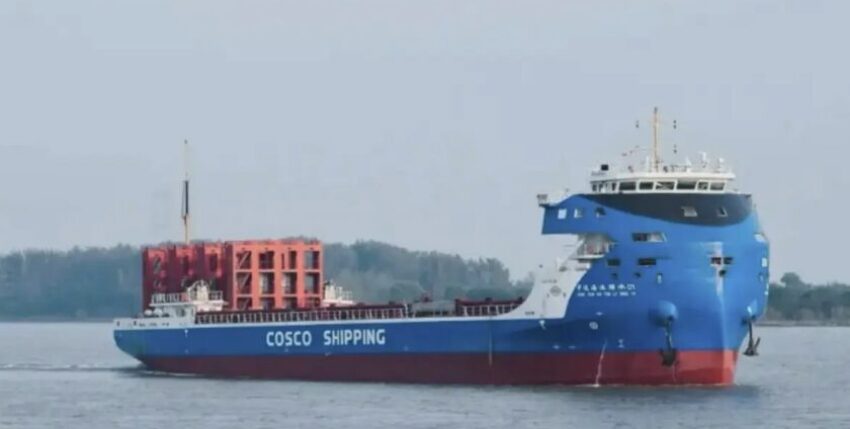The "Greenwater 01" (project no. N997) developed by the China Ocean Shipping Group Company (COSCO) is designed for long-distance transport, is 120 metres long and, with a payload of 10,000 tonnes for up to 700 "twenty-foot standard containers" (TEU - Twenty-foot Equivalent Unit), is the largest all-electric container ship in the world to date.
The "Greenwater 01" had already successfully completed its launch at the end of July 2023. It has now been put into service and has started its weekly liner service between Shanghai and Nanjing. The route covers more than 300 kilometres along the Yangtze River.

Series shipbuilding
According to COSCO, the second ship, project no. N998, has been under construction since May 2023 and will also be deployed on the Yangtze River. There are plans to connect other Chinese seaports with an electric container ship in the future.
Efficiency
COSCO did not provide any information on the range of the ship. The calculated fuel savings that could be achieved with the e-container ship compared to conventionally operated ships would amount to around 3.9 tonnes of fuel oil per 100 nautical miles (approx. 185 km), a reduction in CO2 emissions of 12.4 tonnes.
In practice, however, consumption and savings depend on various weather factors and whether you are travelling with or against the current.
Battery management
The ship is powered by two 900 kW motors and the container-sized battery boxes used deliver more than 50,000 kWh. The battery capacity can be expanded to up to 88,000 kWh using additional modules. This means that the range of the ship can be flexibly adapted to the planned length of the respective route. The containerised battery packs are exchanged by crane and charged in port, according to COSCO.
Plan for the future
This all-electric concept is advancing the environmentally friendly modernisation of Chinese shipping. The experience and solutions of central state-owned companies are helping to reduce emissions in Chinese inland and coastal shipping. According to COSCO, the project on the Yangtze River will serve as a model for future environmentally friendly shipping projects.
Conclusion
China is getting serious and is now also transforming maritime freight transport. With the use of electric drives, China is now also seeking to bring about the energy revolution in the container shipping sector and make it more sustainable.
It looks as if politicians, the shipbuilding industry and all major logistics service providers in Europe and Germany can once again only follow in the wake: You want to shout: Wake up at last!
kdk
Sources: electrive.net, Heise










